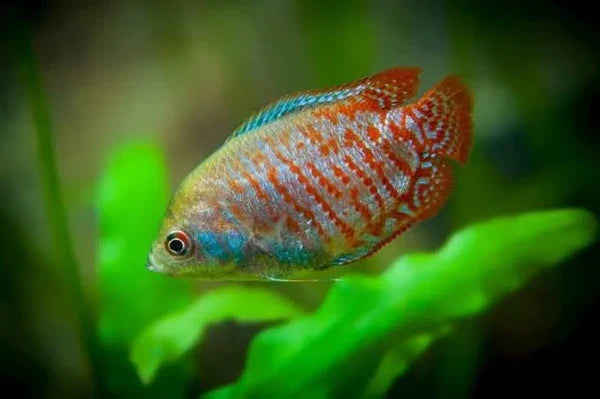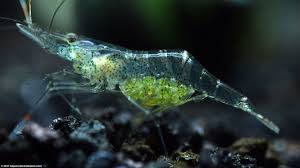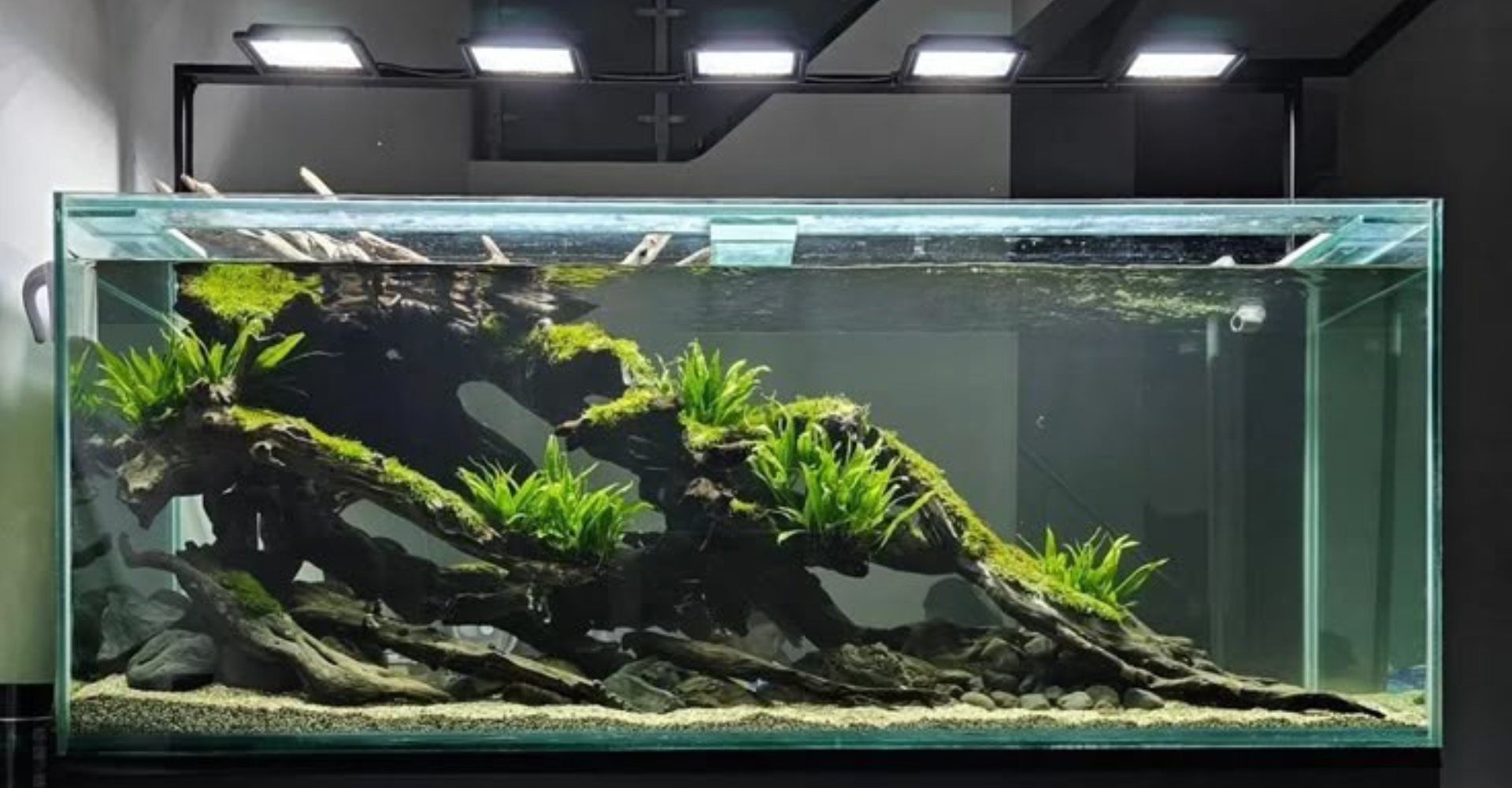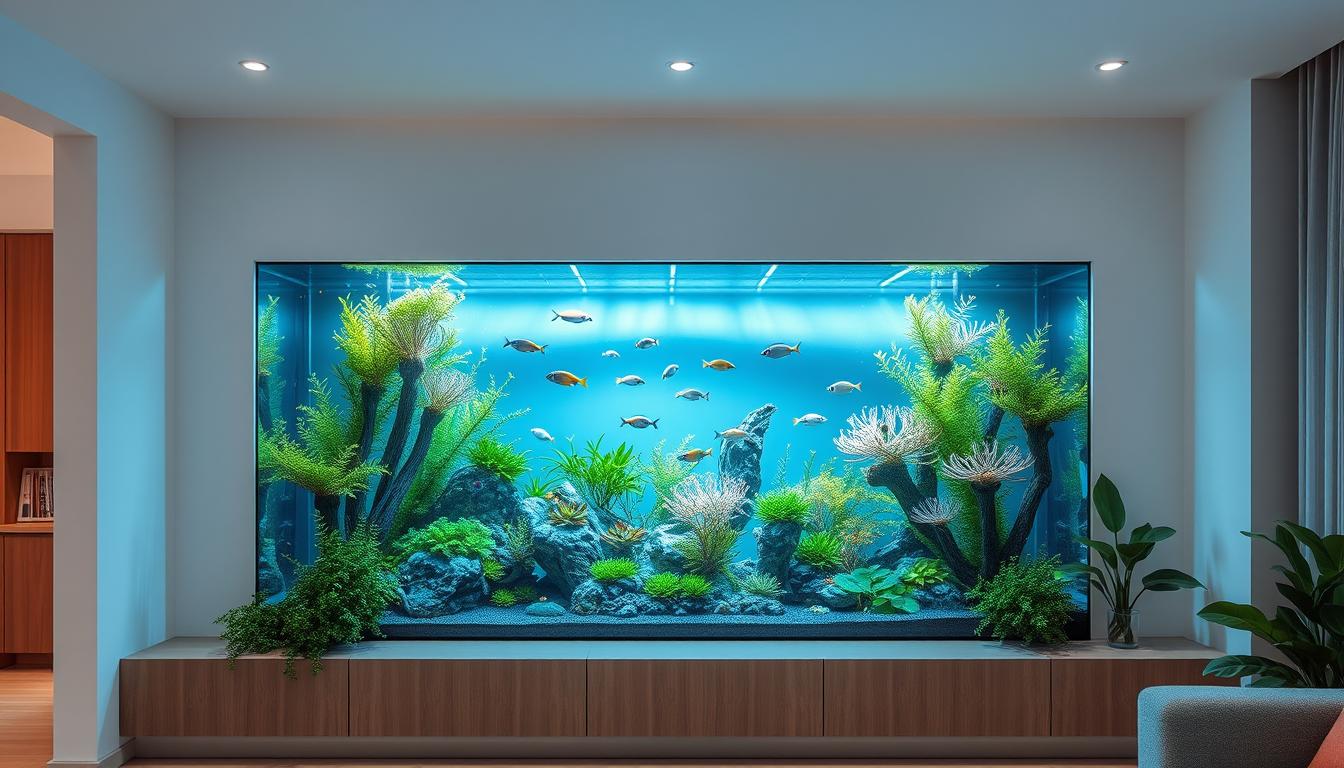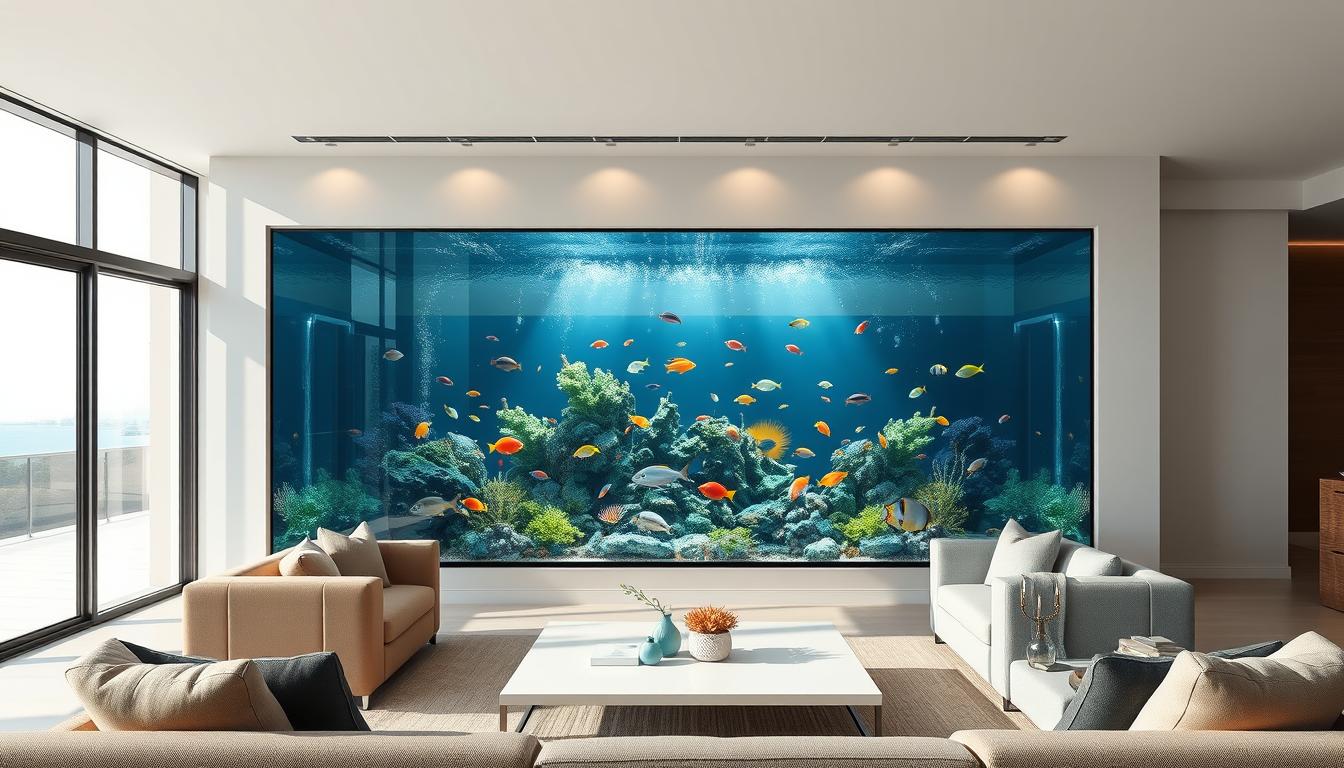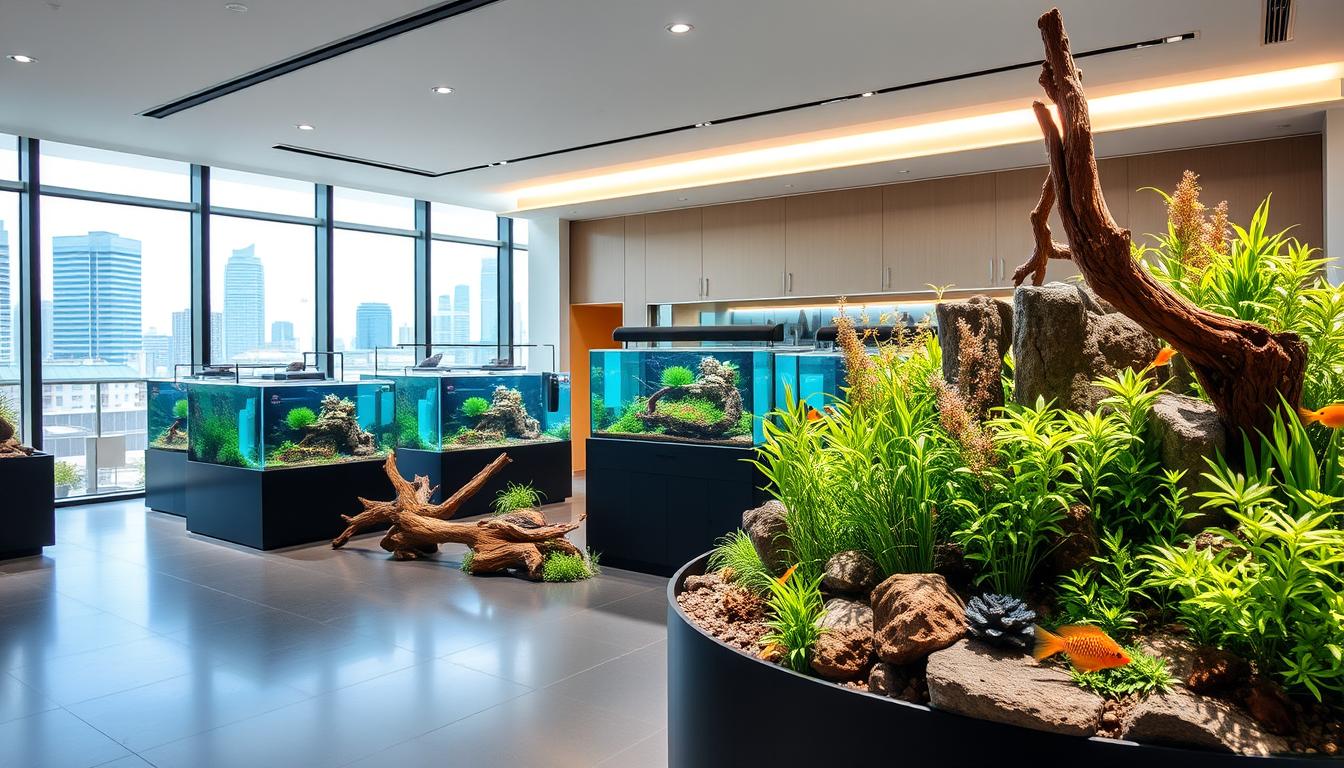Anacharis (Egeria densa).

Anacharis is one of the most popular and easiest-to-grow aquatic plants. It grows quickly and can handle various water temperatures, making it suitable for different aquariums. They are a good choice for a beginner aquarium.
Anacharis, also known as Egeria densa, is a species of aquatic plant in the family Hydrocharitaceae. It is native to South America but is now widespread in North America and other parts of the world. It is generally considered an invasive species.
Anacharis is an aquatic species up to 3 meters in length. It has long, slender stems and bright green, divided leaves that grow in groups of four to eight. The leaves are arranged alternately along the stem and are about 1-3 cm long.
Anacharis are a popular aquarium plant because they are easy to grow and help keep the water clean by absorbing excess nutrients. They are also used in outdoor ponds to provide fish and other aquatic life oxygen. However, this is a fast-growing species, so pruning is necessary to keep your tank tidy.
Duckweed (Little Lemna).

This is a very common plant that likes to cling to other aquatic plants. Only one seedling is needed to start a new duckweed's life cycle.
Duckweed, also known as Little Lemna, is an aquatic plant in the Lemnaceae family. It is one of the smallest flowering plants in the world, with leaves measuring just a few millimetres.
Duckweed is found in calm, slow-moving freshwater bodies like ponds, lakes, and streams. They develop into dense mats on the surface of the water, providing important habitat and food for a variety of aquarium fish.
GIVE AWAY DUCKWEED AND WATER SPANGLES

One of the unique features of duckweed is its ability to reproduce quickly. Under favourable conditions, duckweed can double in number in just a few days. This makes it a valuable food source for fish and a potential biomaterial.

In addition, duckweed has been studied for its ability to remove nutrients such as nitrogen and phosphorus from water. This makes it a potentially valuable tool for managing the water quality in your tank.
However, duckweed can also become a nuisance if they grow too dense and interfere with oxygen sources. If you want to add duckweed to your tank, keeping a close eye on their development is important.
Java moss (Vesicularia dubyana).

Although often associated with growing on driftwood and rocks, java moss can float freely throughout your aquarium. Compared to other aquatic plants, java moss does not grow fast and can be grown if you wish. It does not grow too tall and often creates a rug over surfaces and decorations.
Java moss is a great addition to any aquarium as it offers many benefits. It helps oxygenate the water, provides shelter for fish and shrimp, and can help remove pollutants from the water. It is also an excellent food source for some fish and invertebrates.
JAVA FERN X JAVA MOSS: THE SPECIAL BUNDLE
To grow Java moss in an aquarium, attach them to the surface with a fishing line, cotton thread, or a glue stick. Once attached, it will begin to grow and spread throughout the tank. They don't require any special light or fertilizer, but they do need regular pruning to avoid overgrowing and becoming too bushy.
Hornwort (Ceratophyllum Demersum).

Hornwort is a popular aquatic plant commonly grown in aquariums. It is a submerged plant native to North America but can also be found in other parts of the world.
Hornwort is a great addition to any aquarium as it offers many benefits. It helps to oxygenate the water, remove excess nutrients, and provide refuge for fish and shrimp. In addition, it is a fast-growing plant that can quickly absorb pollutants from the water.

ANUBIAS BARTERI VAR. NANA 'PETITE'
To grow hornwort in an aquarium, plant it on a substrate or attach it to the surface with a fishing line or similar material. Once planted or attached, it will grow and spread throughout the tank. Hornwort does not require any special light or fertilizer but needs regular pruning to avoid becoming too bushy.
One thing to note about hornwort is that it can shed its leaves, creating a mess in the tank. However, this can be minimized by providing a good water flow and keeping the tank clean.
Amazon Frogbit (Limnobium laevigatum).

These plant form Asterisk-shaped and relatively short-rooted; it won't compete for space in your tank. They can cover the water's surface with shade, so be careful if you share them with other submerged plants. Deeper plants may not receive enough sunlight to survive.
Amazon Frogbit (Limnobium laevigatum) is a floating aquatic plant commonly used in aquariums. It is native to South America but is now also found in other parts of the world.
Simply place the plant above the water to grow an Amazon Frogbit in an aquarium. They do not need to be planted on the substrate or attached to the surface. Once placed in the water, it will grow and spread throughout the tank.
The Amazon Frogbit does not require any special lighting or fertilizers, but it does need regular pruning to prevent it from becoming too dense and blocking too much light from reaching the lower levels of the tank.
One thing to note about Amazon Frogbit is that it can be sensitive to changes in water conditions, such as fluctuations in temperature or pH. Therefore, it is important to maintain stable water conditions and closely monitor plants for any signs of stress.
Antler Fern - Ceratoteris Pteridoides.

Antler Fern (Ceratopteris pteridoides) is a common aquatic fern used in aquariums. It is native to Africa but is now also found in other parts of the world.
One of the main benefits of Antler Fern is that it is very adaptable to a wide range of water conditions. They thrive in both soft and hard water and tolerate a wide range of pH levels. Additionally, it can grow underwater and floating, which means it can be used in various tank setups.
To grow Antler Fern in an aquarium, plant it in a substrate or float it. Once planted or attached, it will grow and spread throughout the tank. Antler Fern does not require any special light or fertilizer, but it needs regular pruning to avoid becoming too bushy.
Pennywort - Amazing Floating Plants.

Pennywort is a versatile aquatic plant that can provide many benefits to an aquarium. Here are some benefits of Pennywort:
Pennywort can help remove excess nutrients, toxins, and residues from the water. This helps to keep the water clean and is good for fish and shrimp. Gotu kola produces oxygen during photosynthesis, which can help increase oxygen levels in the water. This is especially important in aquariums with high numbers of fish or shrimp.
Pennywort is a versatile plant that can coexist well with other aquatic plants. Depending on how the aquarium is set up, it can be used as a foreground, mid-ground or background plant.
Water Spangles - Slvinia Minima.

Water Spangles are a great addition to aquariums. It is easy to care for and offers many benefits, including providing oxygen, removing nutrients, providing shade and being a natural food source for fish and shrimp.
Water Spangles provide shade for fish and shrimp in the aquarium, helping to reduce stress and improve overall health. Water Spangles can provide a natural food source for herbivorous fish and shrimp species, helping to promote a balanced diet. The delicate, green leaves of Water Spangles can add an attractive and natural look to an aquarium.
Ricca Fluitans - Floating Crystalwort.

Riccia Fluitans can help increase oxygen levels in the water, which is vital for fish and shrimp health. They also absorb excess nutrients from the water, such as nitrates and phosphates. This can help prevent algae growth and promote the growth of other aquatic plants.
Riccia Fluitans provide refuge for fish and shrimp, which can help reduce stress and improve overall health. They are versatile plants; they live well with other aquatic plants, creating a symbiotic environment for shrimp, fish and other aquatic plants. The delicate foliage and bright green colour add to the visual appeal of your aquarium.
Water wisteria (Hygrophila difformis).

Water wisteria can grow very large and overwhelmingly in aquariums. Wisteria will grow horizontally and vertically unlike many other aquatic plants, which can overwhelm other plants in the same area.
Wisteria flowers help remove excess nutrients, toxins and waste from the water, keeping the water clean and good for the fish community.
Now, it is your turn to choose the best plants for your aquarium tank. Contact us if you have any questions.


